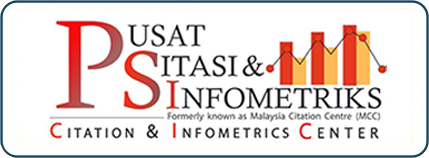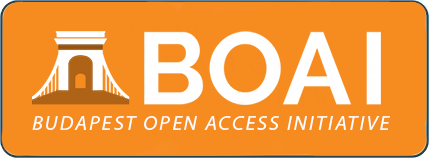Qualitative Study in Identifying Reason that Motivate Malaysian Muslims in Writing Wasiyyah
DOI:
https://doi.org/10.33102/jmifr.v17i2.293Keywords:
Wasiyyah, motivation, self-determination theory, intrinsic motivation, extrinsic motivationAbstract
While there has been increasing research interest in the Islamic estate planning areas, few studies have yielded detailed insights into the views and factors which motivate consumer in patronising wasiyyah. The qualitative research describes in this paper aimed to explore the views of Malaysian Muslims towards wasiyyah and to identify the reason that motivate Muslims in writing wasiyyah services in Malaysia. The study was framed by using the Self-Determination Theory (SDT) approach. This enabled us to examine the factors of motivation in two ways: intrinsic motivation and extrinsic motivation. The research participants for the current study were recruited on the basis of a consumer who has made wasiyyah in any institutions in Malaysia. Data analysis was undertaken using a framework approach and was informed by SDT. Consumers’ intrinsic motivation has been identified into three items: interest, religion, and family. Meanwhile, consumers’ extrinsic motivation also come out with three items: future rewards, awareness, and financial management. All these factors are the main thing that should be focused among marketers to come out with better strategies to increase more Muslims in writing wasiyyah as well as to avoid rising inward in frozen assets. Therefore, more research is required to examine how to raise awareness of Malaysian Muslims on the importance of wasiyyah.
Downloads
References
Abd Wahab, N., Hashim, S., & Abd Ghani, N. A. (2019). What influence Muslims to make wills?: Insights into its determinants. The Journal of Muamalat and Islamic Finance Research, 16(1), 37–52.
Abdul Rahman, M. F. (2007). Bagaimana mengurus harta pusaka (how to manage estate). Professional Publishing Sdn. Bhd.
Abdullah, N., Mohamad Basir, F. A., Mohd Ariffin, A., Yusuff, N. D., & Siti Nur Hidayah. (2017). Contributing factors to will adoption among urban Muslims community in Klang Valley. Journal of Emerging Economies and Islamic Research, 5(4), 42–50.
Aflah, Razifah, Nurhafizah, & Nurfarhana. (2017). Factors inhibiting wasiyyah practice among Malay community. International Journal of Management Research & Review, 7(9), 926–932.
Alma’amun, S. (2010). Islamic estate planning : Analysing the Malaysian perceptions on wasiyyah (will) and bequest practices. Retrieved from http://etheses.dur.ac.uk/731/
Alma’amun, S. (2012). Searching for bequest motives and attitudes to leaving a bequest among Malaysian Muslims. Jurnal Ekonomi Malaysia, 46(1), 73–84.
Amabile, T. M. (1993). Motivational synergy: Toward new conceptualizations of intrinsic and extrinsic motivation in the workplace. Human Resource Management Review, 3, 185–201. https://doi.org/10.1016/1053-4822(93)90012-S
Ambali, M. A. (1998). The practice of Muslim Family Law in Nigeria.
Amanah Raya Berhad (2006, May 22). Estate administration: Procedure of Amanah Raya Berhad. News Straits Times.
Bassous, M. (2014). What are the factors that affect worker motivation in faith-based Nonprofit Organizations? Voluntas, 26(1), 355–381. https://doi.org/10.1007/s11266-013-9420-3
Beata Sounders. (2020, February 11). Motivation and what really drives human behavior. PositivePsychology.com. https://positivepsychology.com/motivation-human-behavior/
Bouteraa, M. (2019a). Barriers factors of wasiyyah (will writing): Case of BSN bank. IBMRD’s Journal of Management & Research, 8(1), 1. https://doi.org/10.17697/ibmrd/2019/v8i1/142279
Bouteraa, M. (2019b). Conceptual study: Barriers of Islamic estate planning. IBMRD’s Journal of Management & Research, 8(1). https://doi.org/10.17697/ibmrd/2019/v8i1/142673
Bouteraa, M., & Al-Aidaros, A.-H. (2020). The role of attitude as mediator in the intention to have Islamic will. International Journal of Advanced Research in Economics and Finance, 2(1), 22–37.
Braun, V., & Clarke, V. (2006). Using thematic analysis in psychology. Qualitative Research in Psychology, 3(2), 77–101.
Chong, S. C., Alma’amun, S., & Sia, B. K. (2015). Bequest motives among older Malays in Selangor. Jurnal Ekonomi Malaysia, 49(2), 17–26. https://doi.org/10.17576/JEM-2015-4902-02
Chuan, C. S., Kai, S. B., Seong, L. C., & Chen, O. B. (2011). Are the urban Malaysian selfish, altruistic, dynastic, or social norms and tradition? European Journal of Social Sciences, 27(1), 96–103.
Corbin, J., & Strauss, A. (2014). Basics of qualitative research: Techniques and procedures for developing grounded theory. Sage Publications.
Dahan, H. M., Mara, U. T., & Ahmad, N. (2012). Factors inhibiting Islamic will adoption: Focus on Muslim community. 3rd International Conference on Business and Economic Research (3rd ICBER 2012) Proceeding, (March), 1805–1818.
DeCharms, R. (1968). Personal causation. New York: Academic Press.
Deci, E. L., & Ryan, R. M. (1985). The general causality orientations scale: Self-determination in personality. Journal of Research in Personality, 109–134.
DeJonckheere, M., & Vaughn, L. M. (2019). Semistructured interviewing in primary care research: A balance of relationship and riguor. Family Medicine and Community Health, 7(2, e000057).
Ghul, Z. H., Yahya, M. H., & Abdullah, A. (2015). Wasiyyah (Islamic will) adoption and the barriers in Islamic inheritance distribution among Malaysian Muslims. International Journal of
Humanities Social Sciences and Education, 2(1), 2349.
Gilal, F. G., Zhang, J., Gilal, R. G., & Gilal, N. G. (2018). Linking motivational regulation to brand passion in a moderated model of customer gender and age: An organismic integration theory perspective. Review of Managerial Science, 1–27. https://doi.org/10.1007/s11846-018-0287-y
Gilal, F. G., Zhang, J., Paul, J., & Gilal, N. G. (2019). The role of self-determination theory in marketing science: An integrative review and agenda for research. European Management Journal, 37(1), 29–44. https://doi.org/10.1016/j.emj.2018.10.004
Goldstein, A. E., & Reiboldt, W. (2004). The multiple roles of low income, minority women in the family and community: A qualitative investigation. The Qualitative Report, 9(2), 241–265.
Harian Metro. (2020). Aset RM70B tak bertuan. https://www.pressreader.com/malaysia/harian-metro/20200112/282458530899461
Hars, A., & Ou, S. (2000). Why is open source software viable? A study of intrinsic motivation. AMCIS 2000 Proceedings, 379.
Hassan, A. A. (2005). Wisoyah, wasiyyah dan wasiat: Perbezaan, perbandingan dan kaitannya dengan perancangan pusaka Islam. Seminar Perancangan Harta Pusaka Islam. Kuala Lumpur.
Hassan, A. A., & Yusop, Y. (2006). Perancangan harta di ZAR Perunding Pusaka Sdn. Bhd. (Estate planning in ZAR Perunding Pusaka Sdn. Bhd). In S. M. Maha, Harta amanah orang Islam di Malaysia perspektif undang-undang dan pentadbiran (Muslims’ trust properties in Malaysia legal and administrative perspectives) (pp. 149–170). Universiti Malaya.
Horioka, C. Y. (2009). Do bequests increase or decrease wealth inequalities? Economics Letters, 103(1), 23–25. https://doi.org/10.1016/j.econlet.2009.01.009
Horioka, C. Y. (2010). An International Comparison of Altruism and Bequest Motives: The Case of China, India, Japan, and the United States.
Hull, C. L. (1943). Principles of behaviour (Vol. 422). Appleton-century-crofts.
Ismail, M. (2016). Kesedaran perancangan wasiat rakyat Malaysia rendah. The Borneo Post. https://www.theborneopost.com/2016/03/04/kesedaran-perancangan-wasiat-rakyat-msia-rendah/
Jane, L., & Ritchie, J. (2003). Generalising from qualitative research. In Qualitative research practice: A guide for social science students and researchers (2nd ed., pp. 347–362).
Karim, N. A. A. (2016). Estate planning: The benefits of Islamic estate planning (part 1). The Edge Financial Daily. https://www.theedgemarkets.com/article/estate-planning-benefits-islamic-estate-planning-pt-1
Kopczuk, W., & Lupton, J. P. (2005). To leave or not to leave: The distribution of bequest motives. In NBER Working Paper Series.
Labuschagne, A. (2003). Qualitative research: Airy fairy or fundamental? The Qualitative Report, 8(1), 100–103.
Lee, Y. G., & Horioka, C. Y. (2004). The strength and nature of bequest motives in the United States. Econometric Society 2004 Far Eastern Meetings, Econometric Society, 2004(March).
Lei, S. A. (2010). Intrinsic and extrinsic motivation: Evaluating benefits and drawbacks form college instructors’ perspectives. Journal of Instructional Psychology, 37(2), 153–160.
Lepper, M. R., & Greene, D. (1978). Over justification research and beyond: Toward a means-end analysis of intrinsic and extrinsic motivation. In The Hidden Costs of Reward (pp. 109–148).
Li, H., & Wen, H. (2019). How is motivation generated in collaborative consumption: Mediation effect in extrinsic and intrinsic motivation. Sustainability (Switzerland), 11(3). https://doi.org/10.3390/su11030640
Lillard, L. A., & Willis, R. J. (2007). Motives for intergenerational transfers: Evidence from Malaysia. Demography, 34(1), 115. https://doi.org/10.2307/2061663
Lin, H. F. (2007). Effects of extrinsic and intrinsic motivation on employee knowledge sharing intentions. Journal of Information Science, 33(2), 135–149. https://doi.org/10.1177/0165551506068174
Loundes, J. (1999). Household saving behaviour in Australia. In Melbourne Institute Working Paper No. 17/99. https://doi.org/10.1111/j.1759-3441.2001.tb00272.x
Merriam, S. B. (1988). Case study research in education: A qualitative approach. Jossey-Bass.
Mitchell, R., Schuster, L., & Jin, H. S. (2018). Gamification and the impact of extrinsic motivation on needs satisfaction: Making work fun? Journal of Business Research. https://doi.org/10.1016/j.jbusres.2018.11.022
Muda, M. (2008). Instruments of hibah and wills: Analysis of the regulations and applications in Malaysia. Hibah and Faraid National Convention 2008, 1–42. Retrieved from http://www.islam.gov.my/sites/default/files/instruments_of_hibah_and_wills.pdf
Muhamad, A. (2007). Ke arah penyelesaian harta pusaka kecil yang lebih bersepadu cekap dan cemerlang. Konvensyen Perwarisan Harta Islam. Amanah Raya Berhad.
Mursidi, A., & Khairi, K. F. (2019). Determinants of individuals’ intention in patronizing wasiyyah services in Malaysia. Journal of Islamic Management Studies, 2(2), 27–42. https://doi.org/10.1017/CBO9781107415324.004
Nasri, W., & Charfeddine, L. (2012). Motivating salespeople to contribute to marketing intelligence activities: An expectancy theory approach. International Journal of Marketing Studies, 4(1), 168–175. https://doi.org/10.5539/ijms.v4n1p168
Oloyede, I., & Ahmed, A. (2013). Islamic law of wasiyyah and waqf. ISBN, 1–99.
Omar, R. (2009). Wasiat: Tool for Islamic estate planning as practices at Amanah Raya Berhad. IFWMI Intellectual Discussion on Islamic Finance and Wealth Management. Islamic Finance and Wealth Management Institute (IFWMI), Universiti Sains Islam Malaysia (USIM) on 27th May 2009.
Osman, D. J., & Warner, J. R. (2020). Measuring teacher motivation: The missing link between professional development and practice. Teaching and Teacher Education, 92. https://doi.org/10.1016/j.tate.2020.103064
Othman, A. (2014). Islamic trusts: An alternative option for the wealthy. Islamic Finance News, 19–20.
Pamala, W., Madden, K. M., & Katie, M. (2010). Leaving a legacy: Bequest giving in Australia. Australasian Marketing Journal, 18(1), 15–22.
Pamala, W., Wendy, S., & Katie, M. (2012). Motives and barriers to bequest giving. Journal of Consumer Behaviour, 11, 56–66. https://doi.org/10.1002/cb
Rigby, C. S., & Ryan, R. M. (2018). Self-determination theory in human resource development: New directions and practical considerations. Advances in Developing Human Resources, 20(2), 133–147. https://doi.org/10.1177/1523422318756954
Ryan, R. M., & Deci, E. L. (2000a). Intrinsic and extrinsic motivations: Classic definitions and new directions. Contemporary Educational Psychology, 25(1), 54–67. https://doi.org/10.1006/ceps.1999.1020
Ryan, R. M., & Deci, E. L. (2000b). Self-determination theory and the facilitation of intrinsic motivation, social development, and well-being. American Psychologist, 55(1), 68–78. https://doi.org/10.1037/0003-066X.55.1.68
Ryan, R. M., & Deci, E. L. (2019). Brick by Brick: The Origins, Development, and Future of Self-Determination Theory. https://doi.org/10.1016/bs.adms.2019.01.001
S. Eccles, J., & Wigfield, A. (2002). Motivational beliefs, values, and goals. Annual Review Psychology, 53, 109–132.
Shahanaaz, H. (2010). From if there’s a will, there’s a way. Retrieved September 20, 2018, from The Star Online website: http://thestar.com.my
Shiffman, L. G., Hansen, H., & Kanuk, L. L. (2008). Consumer behavior: A European outlook. Harlow, England; Upper Saddle River, N. J.: Prentice Hall/Financial Times, 2008.
Shin, J., & Grant, A. M. (2019). Bored by interest: How intrinsic motivation in one task can reduce performance on other tasks. Academy of Management Journal, 62(2), 415–436. https://doi.org/10.5465/amj.2017.0735
Skinner, B. F. (1953). Science and Human Behaviour: Simon Schuster.
Slavík, C., & Wiseman, K. (2018). Tough love for lazy kids: Dynamic insurance and equal bequests. Review of Economic Dynamics, 27, 64–80. https://doi.org/10.1016/j.red.2017.11.001
Steciuch, C. C., Kopatich, R. D., Feller, D. P., Durik, A. M., & Millis, K. (2019). Don’t go with your gut: Exploring the role of motivation in aesthetic experiences. Psychology of Aesthetics, Creativity, and the Arts, (May). https://doi.org/10.1037/aca0000259
Utusan Borneo (Sarawak). (2016). Kesedaran perancangan wasiat rakyat Malaysia. Retrieved January 7, 2020, from https://www.pressreader.com/malaysia/utusan-borneo-sarawak/20160304/281560879881656
White, R. W. (1959). Motivation reconsidered: The concept of competence. Psychological Review, 66(5), 297–333. https://doi.org/10.1037/h0040934
Yaacob, O. (2006). Pembentukan trust hibah sebagai alternatif perancangan harta (the formation of trust hibah as an alternative in wealth planning). In S.M. Maham, Harta amanah orang Islam di Malaysia perspektif undang-undang dan pentadbiran (Muslims’ trust properties in Malaysia legal and administrative perspectives) (pp. 171–207). Universiti Malaya.
Yildiz, S. M., & Kara, A. (2017). A unidimensional instrument for measuring internal marketing concept in the higher education sector: IM-11 scale. Quality Assurance in Education, 25(3). https://doi.org/10.1108/QAE-02-2016-0009
Yusof, N. A. M. (2019, June 19). Usah ambil mudah persoalan wasiat, pengurusan harta selepas mati. BH, New Straits Times Press. https://www.bharian.com.my/rencana/agama/2019/06/576016/usah-ambil-mudah-persoalan-
wasiat-pengurusan-harta-selepas-mati
Zainol, Z., Abd Wahab, N., Maamor, S., & Hashim, S. (2019). Factors influencing Muslim choice on wasiyyah: A logit model analysis. International Journal of Islamic Business, 4(2), 61–69.
ZAR Perunding Pusaka. (2004). Merancang pusaka elakkan persengketaan dan penyelewengan. Utusan Malaysia, p. 8.
Zurina, S., Yusoff, Z., & Noh, S. M. (2013). Islamic financial planning and wealth management. IBFIM.
Downloads
Published
How to Cite
Issue
Section
License
Copyright (c) 2020 Amalina Mursidi , Suharni Maulan

This work is licensed under a Creative Commons Attribution 4.0 International License.















